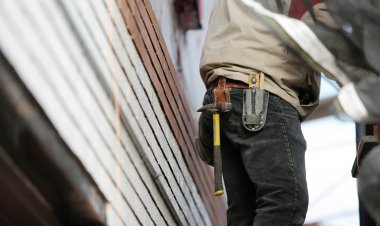7 Phases of Mortgage Home Reposession
In a scenario where a home buyer took a mortgage to actualize home ownership and unfortunately he or she hasn’t repaid the loan, home repossession takes center stage as the last resort.

Homeownership is a dream and aspiration for all and sundry. Homeownership ideally takes many steps so as to actualize the home dream into a reality. In realizing this, homeowners will have a roof over their heads and a perfect place to call home.
In a scenario where a home buyer took a mortgage to actualize home ownership and unfortunately he or she hasn’t repaid the loan, home repossession takes center stage as the last resort.
House repossession is a legal process where a mortgage lender or secured loan provider takes ownership of a property. This court action to repossess your home occurs as the last resort. This process has the following steps:
1. Lender contacts you about mortgage arrears
The lender will get in touch with you to understand why you missed your mortgage payment. Additionally, they will enquire on how your purpose to pay back the remaining arrears. To remedy debt management and payment, the homeowner can start by preparing financial statements and prioritizing on how to pay back the debts.
On a different side of the coin, if the homeowner reaches a point where the mortgage is expensive and the repayment plans he has are unaffordable, the homeowner can request more time to find a home buyer and sell the property immediately.
2. Lender starts court action
As mentioned above, court action is the last resort if repayment of the loan reaches a dead end. All court processes should take due diligence. Before the lender takes you to court, a list of requirements must be met.
The homeowner must be furnished with the necessary documents that detail all missed payments, total arrears, and all outstanding mortgage debt. Legal advice is very important once the lender initiates the court action.
3. The court sends you paperwork
At this stage, court processes beginning is imminent. Legal representation is important when the homeowner cannot appear in person during the numerous court hearings. The court serves the defendant with all court paperwork and documents. They include the following:
Claim and defense forms - This document implies that the lender has applied lawfully for a possession order.
The Notice of Possession Hearing- The court has arranged a hearing date for when the court hearings begin.
If one cannot afford legal representation, he or she should request the court for assistance in providing a lawyer preferably offered by the state.
4. You attend the possession hearing
The court dates have been set and the hearing will begin. The homeowner should attend the hearing and only when in rare circumstances should a legal representation be sent.
It is important to mention that cases like this which carry heavy magnitude on home ownership and property custody, being settled outside court should be out of the question.
Attending the court hearing in person guarantees that the possession order cannot be granted out rightly and the home owner ends up losing the property.
On the contrary, if the defendant can’t attend the court session in person, a court hearing can be conducted via video conferencing. This will mean one endeavor to have a stable internet connection.
5. The court makes a decision
The court has two types of possession orders:
An outright order and a suspender order. An outright possession order means that the homeowner is demanded by the court to vacate the residential property in like 3 or 5 weeks after the hearing.
A suspended order on the other side means that the court allows the “homeowner” to stay on the property under some terms set by the court. These terms include limited travel, and limiting the number of visitors one can host on the property just to mention but a few. This could also indicate a white smoke has been found in terms of how you will repay the mortgage loan.
The court hearing can be adjourned if the defendant is the homeowner cites with evidence that they received the court paperwork late and have to familiarize themselves with all court processes in advance.
6. An eviction notice
When all repayment avenues of the mortgage loan have reached a dead end and hit a snug, an eviction notice will be served. The eviction notice must have an eviction warrant from the court.
The eviction takes effect 14 days after the homeowner has been served with the papers. To stop an eviction, one can request the court for another repossession hearing if he or she feels justice can be served in “their favor”.
7. Sale of the property by the mortgage lender
Once the eviction is completed, the mortgage lender will sell the property to a prospective buyer. The previous homeowner should pay some finances if furniture and appliances in the house cost less than the entire property as a whole.
The bottom line is that home ownership shouldn’t be a matter of life and death. Always own a property that you can manage financially without wallowing in debt.
If you have a real estate press release or any other information that you would like featured on African Real Estate Blog Post do reach out to us via email at [email protected]





























![7 Famous Architectures in Africa [PHOTOS]](https://realestateblogpost.com/uploads/images/2023/05/image_380x226_646c9c2bd8642.jpg)



